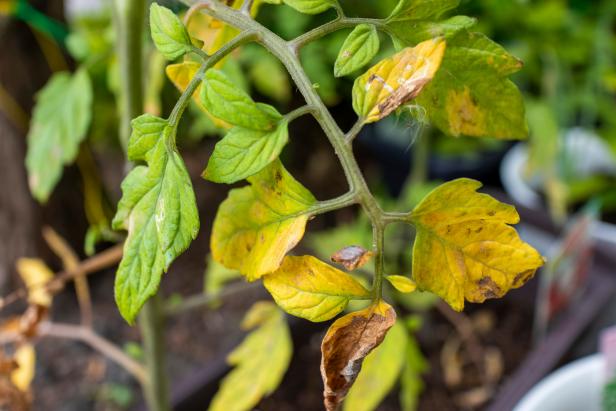If you’ve ever seen yellow leaves on your what-was-once-green-plant, read on to find out the causes, symptoms and solutions. It’s going to be fine!
A vibrant green bacopa plant can suddenly take on a sickly yellow hue, sending any gardener into a panic But never fear – with some detective work, you can get to the root of the issue and restore your bacopa to its former glory
Diagnosing the Cause
Pinpointing the cause of yellowing leaves is step one. Here are some of the most common culprits:
Improper Watering
Too much or too little water causes all sorts of problems. Overwatering leads to root rot, while underwatering stresses the plant. Both can make leaves go yellow. Check soil moisture regularly and water when the top inch is dry. Make sure pots drain well.
Nutrient Deficiencies
Lack of nutrients like nitrogen, iron, magnesium, and potassium yellows leaves. Apply a balanced liquid fertilizer every 2-4 weeks in spring and summer to provide missing nutrients.
Lighting Issues
Too much or too little light leads to yellowing. Bacopa thrives in moderate to bright indirect light. Low light causes yellowing, while direct hot sunlight scorches leaves yellow.
High Salt and Mineral Levels
Poor water quality with high salt ammonia, phosphate or nitrate content damages roots and leaves. Use distilled or rainwater for irrigating and spritzing.
Pests
Hungry insects like aphids, thrips, and spider mites suck sap and cause yellow speckling. Use insecticidal soap or neem oil to control. Isolate affected plants.
Diseases
Fungal and bacterial diseases also yellow leaves. Improve air circulation and avoid wet leaves to prevent diseases. Remove affected foliage promptly.
Solutions to Restore Green Vitality
Once you’ve diagnosed the likely cause, it’s time to take action. Here are some remedies:
-
Adjust watering routine: Water thoroughly when soil is partly dry. Improve drainage.
-
Fertilize with a balanced formula: Use every 2-4 weeks in growing seasons.
-
Modify light exposure: Move plant or use sheer curtains to filter intense sunlight.
-
Treat pests: Use insecticidal soap, neem oil or other organic sprays.
-
Improve air flow: Space plants, prune densely packed stems.
-
Sterilize tools: Disinfect shears and stakes to prevent disease spread.
-
Flush soil: Rinse potting mix with distilled water monthly to remove salts and minerals.
-
Prune affected foliage: Remove yellow leaves promptly to improve appearance.
-
Repot annually: Refresh potting mix and prune roots to improve plant health.
Prevention Is Better Than Cure
While it’s easy to rectify yellowing leaves, prevention is always better. Here are some tips:
- Check soil moisture frequently to maintain optimal levels
- Fertilize regularly during growing seasons
- Monitor for pests and treat early
- Improve air circulation with fans
- Sterilize tools before each use
- Provide ideal lighting conditions
- Flush soil to prevent mineral buildup
- Repot each spring into fresh potting mix
By understanding the reasons behind yellowing and taking prompt action, you can revive your bacopa and maintain gorgeous green vitality all season. Consistent care and early problem detection helps keep bacopa thriving for years to come.

Yellow Leaves Fading to Green or Turning Bright Yellow
Are the leaves turning bright yellow and is the soil wet? You might even notice blackened stem bases or fungus gnats. This is a sign of overwatering. You can correct this by letting the soil dry out or repotting the plant in dry soil.
Why Do Leaves Turn Yellow?
Yellow leaves on plants mean different things depending on the variety, and what other symptoms the plant is showing. Overwatering, underwatering, mineral deficiency, temperature stress, and so on can all be the cause. Identifying the specific symptoms your plant is showing can help you determine the cause and take appropriate action.
Why leaves are turning yellow I How To Fix It
FAQ
Why are my bacopa leaves turning yellow?
What is a solution for yellowing of leaves?
What mineral is lacking when a plant leaves turn yellow?
How to bring bacopa back to life?
What happens if a leaf turns yellow again?
Once a leaf turns yellow, it rarely turns green again, especially if the yellowing is due to aging or permanent damage. However, if yellowing is due to reversible issues like nutrient deficiencies or improper watering, addressing these issues can prevent further yellowing and promote the growth of new, healthy green leaves.
Why do outdoor plants turn yellow?
When the leaves of outdoor plants turn yellow, it is commonly associated with chlorosis, a symptom caused by insufficient chlorophyll being produced by the foliage. This pigment is essential for photosynthesis and gives leaves their green color. There are several reasons why chlorosis could be occurring.
Why are my vegetables turning yellow?
The damage from several insects can cause the yellowing of leaves, especially in vegetables. Common culprits are harlequin bugs, spider mites, squash bugs, and whiteflies.
Do yellow leaves mean a plant is dying?
Yellow leaves on plants don’t necessarily mean the overall plant is dying. Sometimes, older leaves turn yellow and shed. If the cause for yellowing is reversible and the plant is otherwise healthy, then there’s no reason to think the plant is beyond repair.
